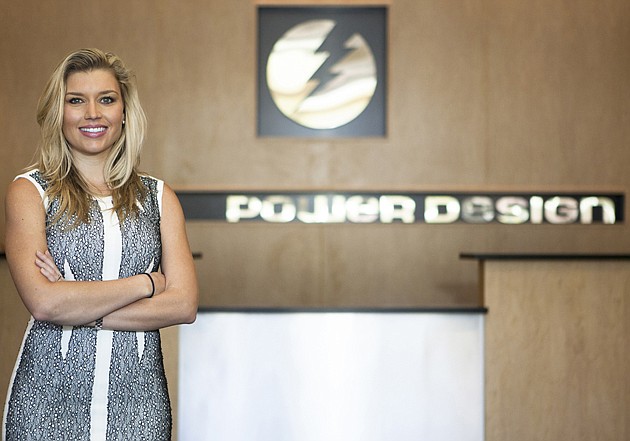- November 25, 2024
-
-
Loading

Loading

At Power Design Inc., the electrical contracting firm housed in a sleek, redeveloped airbag factory in St. Petersburg, business is booming. Revenues have leapt, and Lauren Permuy, vice president of business development, finds herself in the enviable position of being picky about new contracts.
With 121 projects under way from Florida to New Jersey, and out to the California coast, the company clearly has left behind the economic crisis that sliced its revenue and brought apartment construction to a grinding halt. Gone are the glory days of 2007, when Power Design reported revenue of more than $211 million, but the firm is rebounding fast. Revenue had sunk to less than $92 million in 2010, but it climbed to $110 million in 2011, and in 2012, jumped 28.2%, to $141 million. And Permuy projects about 40% growth for 2013.
“We are growing so fast right now we cannot fill the positions fast enough. We have completely sucked Tampa Bay dry of talent and we are moving people in from all over the country,” says Permuy, the daughter of CEO Mitch Permuy and CFO Dana Permuy, who founded the firm in 1989 and guide its operation. Lauren Permuy, 28, has a construction management degree from the University of Florida, and earned a general contracting license. She has been with the firm five years.
What's going right for Power Design? It is putting 75% of its effort into multifamily projects, but diversifying within that property type, building electrical systems not just for apartments, but also for student housing, assisted living and military units. The company is also undertaking hospitality projects. But the newest, lucrative market is data centers—structures housing “cloud” storage.
Power Design has completed several projects for CoreSite, a national provider of data centers, and it just landed a $21 million CoreSite project in Secaucus, N.J. Not surprisingly, the company aims to increase its market share in data centers. But expansion is both a blessing and a challenge. With many master electricians now in their 50s and preparing for retirement, the task of filling electrician, project manager and superintendent positions at the new projects hasn't been easy.
“We'll move our crews out there”—to New Jersey, says Lauren Permuy. “We follow clients to new sites.” That approach has added to the firm's success and multiplied its projects, because developers and contractors with whom they subcontract prefer to work with companies whose work they know and trust.
In an odd way, the recession provided new business, because many laid-off contractors landed jobs in far-flung states, and phoned Permuy to let her know of new construction and encourage Power Design to participate. “We've doubled our customer base,” she says. In turn, Permuy provides work for electricians who proved themselves in earlier projects. “We'll send out a mass text message to all the guys who are available: 'Who wants to go to New Jersey?' You'd be surprised at the people who have brothers, or other family out there.” If the project turns into a longer duration, she hires local staff.
The Permuys' decision to offer more than basic electrical contracting has given them an edge over the competition. They have become a kind of one-stop shop, making it easier for clients to obtain several services from the same provider. For instance, Power Design offers engineering services, and a comprehensive design-build slate that can include telecommunications, audio visual, security access and other elements.
Permuy receives a bounty of potential contracts, but restricts her choices to core project types. “I would look at a bank if it's a large high-rise, but we don't do small branches,” she says. And she has veto power, using location, size, and the client to help her select projects.
Apartment projects are the big trend. “Right now with the struggle of people getting loans, and the instability in the job market—unemployment is still really high so people are afraid to buy—many more people are renting,” she says. “And now people are getting married and having kids later, so they're staying in apartments longer. So we're building the hell out of apartments.”